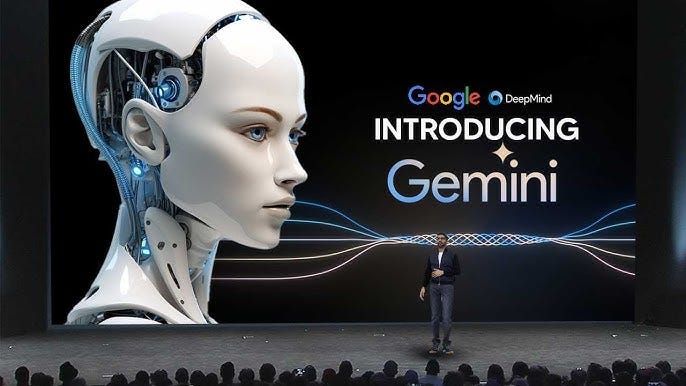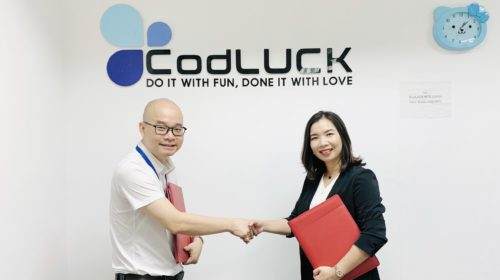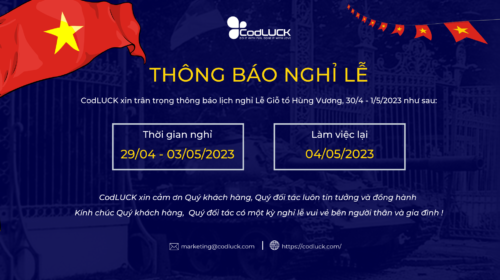As the “Artificial Intelligence (AI) Boom” continues to ignite global excitement for emerging AI language models, companies in the advertising industry are racing to implement AI-powered solutions for more personalized targeted advertising.
AI brings a lot of exciting opportunities, but it also comes with its own set of challenges and potential pitfalls. In this post, we’ll dive into both the opportunities and the challenges that AdTech companies will face with the rise of AI.
Opportunities Come Along With Challenges When Applying AI In AdTech Industry
The AdTech Market can expect significant growth, primarily driven by this widespread adoption of AI technologies and their integration into the Dynamic Digital Advertising industry. Global Newswire suggests that the Ad Tech Market is likely to hit US$ 1.9 Trillion by 2028, at a market growth of 14.4% CAGR.
Opportunity: Hyper-Personalization and Intelligent Targeting
Among the many benefits that AI has created for the AdTech sector, hyper-personalization and intelligent targeting seem to be the largest contributions. Advertisers can customize their advertisements to customers with high relevance using AI by adjusting ad elements (images, headlines, calls-to-action) based on real-time user data. This is a key factor in advertising strategy, ensuring the messages resonate with the consumers, driving customer satisfaction and business growth.
Predictive analytics and real-time optimization with AI can also help create well-driven campaigns in a fast-paced digital scenario: analyzing historical data, market trends, and user behavior, allowing advertisers to make data-driven decisions for campaign optimization.

AI can also provide ad tech professionals with new and improved techniques to build information on their audience, enhancing targeting and audience insights. AI-powered tools analyze large amounts of data including consumer behavior, interests, and purchase patterns. They can then target specific segments and create messages that are hyper-personalized, with optimized ad spending.
For example, artificial intelligence can assess how users engage with ads, including factors such as how long they dwell on the content, how deeply they scroll, and even their facial expressions.
By leveraging this data, advertisers can determine the level of user engagement and sentiment toward the content. These insights enable advertisers to enhance their ad strategies, customize messaging, and optimize user experiences to achieve superior outcomes.
Challenge: Risk of Data Leakage
There is a growing significance of data privacy and protection on both the consumer and regulator side. Advertisers are focused on understanding and following data protection regulations, such as the General Data Protection Regulation (GDPR) and the California Consumer Privacy Act (CCPA). In response, advertisers are looking into alternative methods of targeting ads that do not rely on personally identifiable information.
Moreover, AI does not have the same governance structures and security measures that the internet holds, which protects enterprise resources from malicious attacks.
Opportunity: Personalization At Scale
When you’re running large-scale campaigns, AI can actually provide personal touch that bases on the purchase history. Virgin Voyages Cruise line recently created a hyper-personalized advertising campaign, starring an AI-generated digital avatar of Jennifer Lopez who personally invites the user to their cruise line.

Challenge: Lawsuits Risk
With this curation, though, comes legal and logistical challenges, largely from a prioritization of protecting reputations. Jennifer Lopez is only allowed to say names from a pre-approved list to avoid reputational challenges. Deepfakes have become an increasingly problematic AI innovation, especially with campaign ads.
Opportunity: High-Quality AI-Generated Content
One thing that’s been an obvious game-changer for the industry has been the tools to create copy, artwork and even audio-visual content with a simple typed prompt. Instead of delving into artwork libraries in search of the images you need or negotiating licensing for the perfect content, material can be tailor-made to your needs in minutes. In an industry where rapid adjustments often need to be made on the fly to respond to trends, being able to work up an entire campaign’s worth of artwork in minutes is an obvious plus.
Discover how GPTLUCK helps create copywriting according to the content marketing formulas.
Challenge: Losing Your Brand Identity
One issue with AI-generated content is that it all comes out looking similar. Although the technology is becoming more advanced all the time, the artwork still tends to have a glossy, slightly plastic appearance that’s easy to spot. Additionally, AI often struggles with accurately rendering human hands. Generative text has a similar drawback, where the output frequently has a generic, middle-of-the-road feel. In adtech, we thrive on bold branding and innovative designs, and while AI excels at iterating on existing concepts, having talented artists and writers on staff is crucial for identifying and addressing these challenges.
For text content creation, we can also see this issue of AI. The content created by AI is often collaged or summarized content, filtered from sources on the internet. In advertising technology, the important thing is the brand’s own creative slogan or big idea, not copied from any source. AI is only better than humans at repeating “things that have already been done”. Businesses should really take this issue seriously and appreciate creative positions that AI cannot replace such as design, content marketing, etc.
Oppoturnity: AI-Aided Decision-Making
One of AI’s greatest strengths is its ability to recognize patterns by analyzing large datasets to identify trends, categories, and predictions. Tasks that might take a human operator hours can be accomplished in minutes with AI. This capability to process large volumes of data quickly means you can handle more analysis without needing to significantly expand your team, offering a significant—and potentially lucrative—advantage for businesses that deploy it effectively.
Challenge: Unreliable Data
U.K. writer Zoah Hedges-Stocks was looking up recipes for fudge and toffee online and stumbled across mentions of a third confection named “scrimgeour.” But after searching for a while, she discovered the truth: There is no such thing. AI-generated recipe blogs had read too much Harry Potter and gotten confused. There’s a character named “Fudge” in the novels, and the AI took the name literally, and it spiraled from there, assuming that “Scrimgeour” was also some kind of candy.
The term “garbage in, garbage out” applies here: An AI’s conclusions are only going to be as good as the data that’s fed into it. If you’re not careful about how you collect and vet your data, your conclusions could get very wrong very fast.
Implementation Strategies of Leading AdTech Companies
Here is how Major Adtech Companies Are Implementing AI:
Google: Following the success of OpenAI’s release of ChatGPT in November 2022, Google launched their AI chat service, Bard (now known as Gemini), in March 2023. The main difference between the two lies in their underlying frameworks and training methods. OpenAI’s ChatGPT is based on GPT (Generative Pre-trained Transformer), while Google’s Gemini is built on PaLM 2 (Pathways Language Model). Since its release, Google has continued to advance Gemini’s capabilities to compete with OpenAI’s ChatGPT.

Meta: Facebook’s parent company, Meta, launched the popular Llama 2 model. Designed to assist developers and organizations in creating generative AI tools and experiences, this large language model (LLM) is freely available for both research and commercial use. Meta introduced Llama 2 in collaboration with their preferred partner, Microsoft.

WPP: NVIDIA, a leading AI company, announced a partnership with WPP, a major advertising holding group. Together, they are developing a content engine built on NVIDIA Omniverse™ and AI, enabling creative teams to produce high-quality commercial content more quickly and efficiently. The engine will incorporate 3D design, along with manufacturing and creative supply chain tools from Adobe and Getty Images, allowing WPP artists and designers to leverage generative AI for 3D content creation.
Conclusion
As the “AI boom” continues to inundate the AdTech industry with thousands of AI-generated companies and products, it’s crucial to understand how to effectively work with AI. The key is never to ask AI to perform tasks you don’t understand. When used correctly, artificial intelligence can be a powerful labor-saving tool, but you must be able to verify its work. Without proper oversight, AI can make mistakes or even fabricate information. While AI can reduce the number of people needed for a task, you’ll always need knowledgeable individuals to oversee and ensure the quality of the AI’s output.
Source: Forbes, LinkedIn


